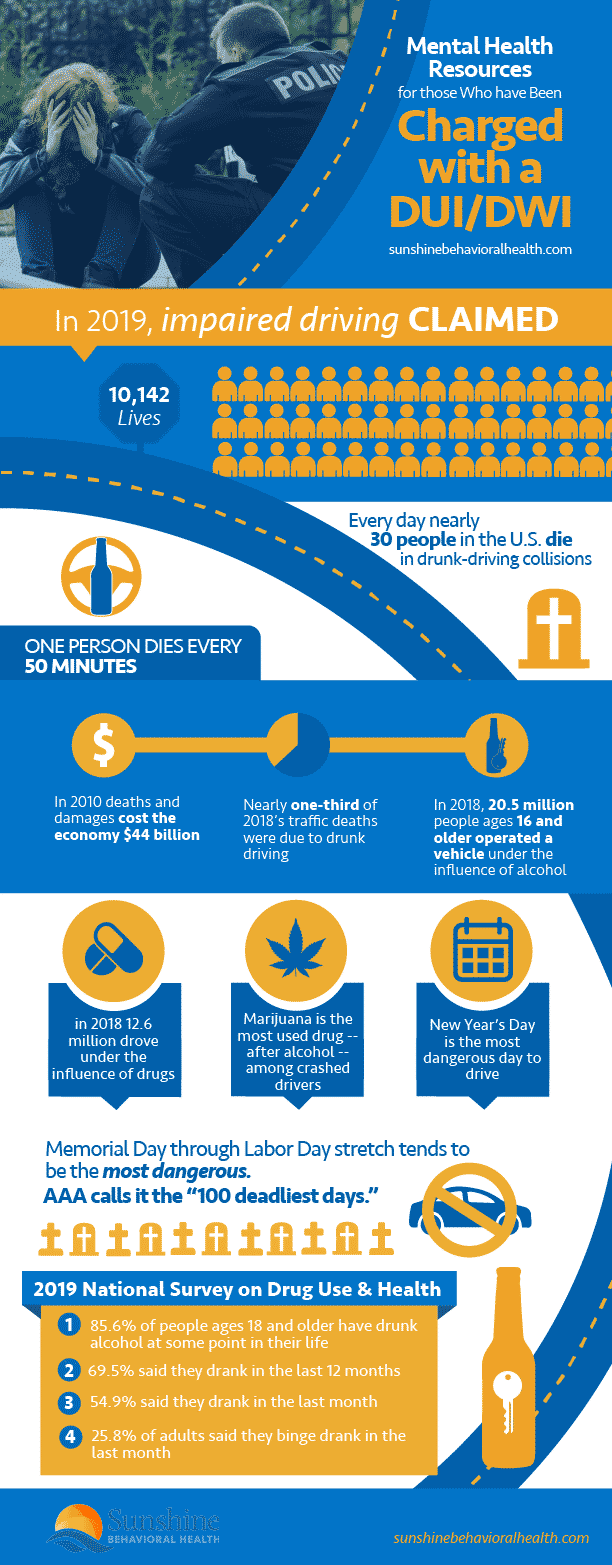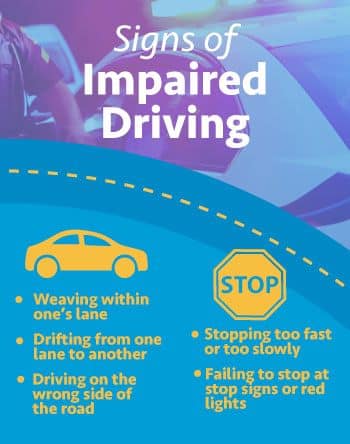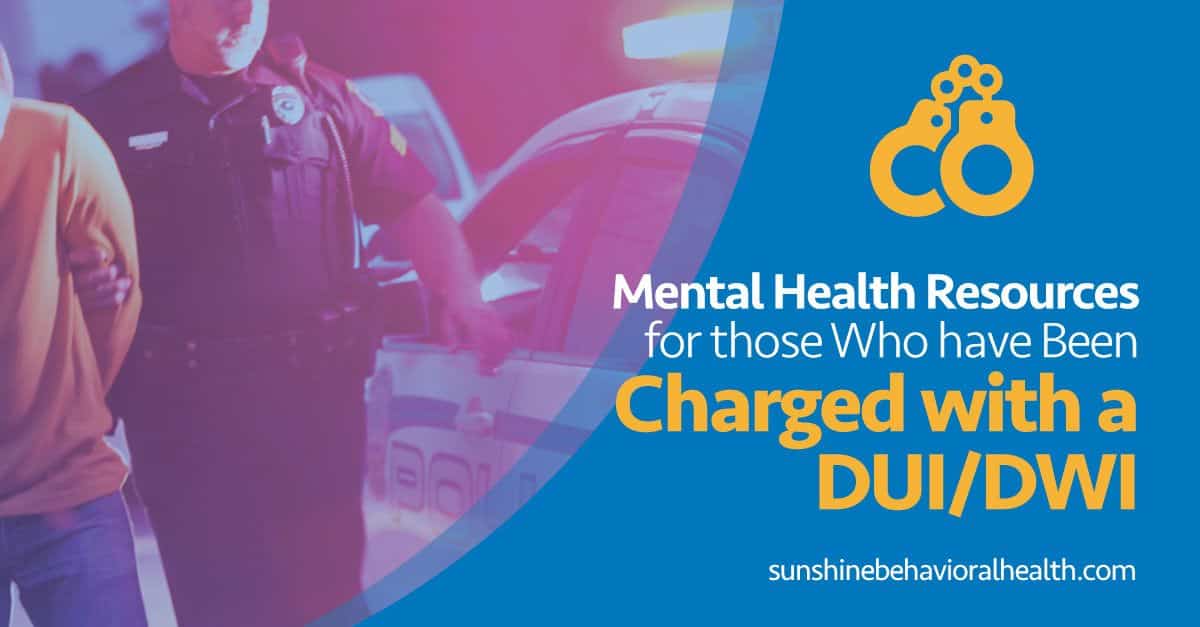There are a number of signs that a person has a drinking or substance use problem. Engaging in dangerous activities — like driving — or getting arrested while under the influence are two major red flags.
If a person finds themself facing the long arm of the law after over-imbibing, it may be time to consider seeking help, either from a mental health or legal professional — or both.
Driving while impaired (DWI) or driving under the influence (DUI) affects both one’s judgment and how they perform behind the wheel. Basically, a person is likely to be drunker than they think they are.
In theory, people should know better. Many drivers admit to engaging in bad behaviors despite the risk.
That includes tired driving, distracted driving, speeding, texting, and, yes, impaired driving.
Despite the toll impaired driving exacts on our society, it remains a real problem.
Consider, in 2019, impaired driving claimed 10,142 lives. That’s a drop of 5.3% from the year before but that’s still 10,142 too many.
Effects of Drinking
Thousands of lives are lost every year in impaired driving crashes. For 2010, drunk driving accidents cost the economy an estimated $44 billion. Nearly one-third of 2018’s traffic deaths were the result of drunk driving. Across the U.S. and in Puerto Rico, a blood alcohol content (or concentration) (BAC) of 0.08 or higher is considered legally over the limit when behind the wheel.
BAC is the amount of alcohol in a person’s bloodstream. (Breath can also be measured; in that case it’s Breath Alcohol Concentration.) Measured by blood or by breath, it’s the weight of ethanol in grams, per 100 milliliters of blood or 210 liters of breath. Urine tests are an option, too. Those can detect alcohol up to 48 hours after one’s last drink, nearly twice as long as a breath test can.
No one person metabolizes alcohol the same. A person’s weight, gender, and percentage of body fat all factor in to how they’ll process that drink. Whether a person drinks on an empty stomach or is on medication can affect how fast they’ll feel buzzed, too.

BAC Behind the Wheel
As a person’s BAC rises, typically their judgment and their driving ability go down. The effects of varying BAC levels include:
- 0.02. Reduced judgment; relaxed; slight mood alteration. On the road, attention span and focus are slightly compromised.
- 0.05. Inhibitions and alertness go down. There’s a feeling of euphoria setting in. Drivers will typically be less coordinated; focus and response times decline.
- 0.08. Balance, speech, vision, reaction time, and hearing are reduced, making it harder to spot danger. Judgment, self-control, memory, and reasoning are compromised. Drivers have a harder time concentrating and are less likely to notice things like stop signs and traffic lights.
- 0.10. Reaction time is off. Making good judgments gets harder. Speech slurs, balance is off, and coordination is down. Drivers have a harder time staying in lane and braking appropriately.
- 0.15. Less muscle control. Loss of balance. Drivers have a harder time controlling the vehicle and focusing on driving. Their vision and hearing are compromised.
Levels higher than 0.15 make a person more likely to vomit, experience dysphoria (feeling unwell), or have trouble walking. Once levels reach 0.25 and over, a person is at risk of alcohol poisoning, losing consciousness or even going into a coma. Respiratory failure is possible then, with the danger of brain damage or even death a real possibility.
Drugged Driving
Not all substances have the same effect on driving. Drugged driving is a very real concern. Marijuana can also slow a person’s reaction time, and affect how a person judges time and perceives distance. Cocaine or methamphetamine can make a person more reckless and aggressive behind the wheel. Benzodiazepines and opioids can make a person fuzzy-headed, drowsy, and dizzy.
For 2018, the National Survey on Drug Use and Health (NSDUH) found that 20.5 million people ages 16 and older operated a vehicle under the influence of alcohol, and 12.6 million drove after taking drugs.
Marijuana is the most used drug — after alcohol — among crashed drivers. It’s still unknown just how much cannabis affects drivers, since the delta-9-tetrahydrocannabinol (THC), its primary psychoactive component, stays in the body for days — and sometimes weeks — after use, so a person with a positive drug test may not always have been partaking shortly before a crash. It’s still considered risky, not to mention it being an illegal combination. Plus, pairing marijuana with alcohol, cocaine, or benzodiazepines appears to amplify the risks.
A Note on COVID-19
For a time crashes were down, but the National Highway Traffic Safety Administration found that despite alcohol-fueled fatalities being down in 2019, more drivers seem to be engaging in risky behaviors since the COVID-19 pandemic. NHTSA also found that more than 63% of drivers in fatal or near-fatal accidents had alcohol or at least one other drug in their system. That’s up from 50% prior to the pandemic. About one in five people in these crashes had a blood alcohol concentration of .15 or higher. That becomes more concerning when one considers traffic volumes were down during the peak of COVID shutdowns, but the number of crashes did not decrease comparably.
Why Do People Drink/Do Drugs?
Why one person’s substance use tapers off on its own (for a fair amount, it does) or it snowballs into addiction, it’s not quite clear. One may try drugs or alcohol for any number of reasons:
- They’re curious
- Peer pressure
- To ease pain
- To slash stress
- For focus
- For confidence
- To self-medicate (dual diagnosis)
Risk Factors for Substance Use
There’s no one reason that can make a person more prone to dependence. There are some indicators, however, that point toward a higher likelihood of developing a substance use disorder.
- Environment. Home, family, and peers are huge influences. If someone is around relatives who drink or use drugs, or they face peer pressure, for example, or if they’re a victim of physical or sexual abuse, these can all raise the likelihood.
- Genetics/biology. Experts think genetics may be about 50% responsible for a person’s likelihood of addiction. Whether a person has a mental disorder like depression or anxiety can factor in as well. So does gender and ethnicity.
- Age of first use. Often, the younger a person is when they first use, the more vulnerable they are. In part that’s because the parts of the brain that govern decision-making and impulse control are still developing into one’s early to mid-twenties.
Dual Diagnosis
 Dual diagnosis is when someone has a mental illness and substance use disorder problem at the same time. It’s also called a co-occurring disorder or co-morbidity, but that term is used less often these days.
Dual diagnosis is when someone has a mental illness and substance use disorder problem at the same time. It’s also called a co-occurring disorder or co-morbidity, but that term is used less often these days.
A dual diagnosis can be mild depression brought on by binge drinking, or bipolar disorder made worse by substance use disorder.
Someone with a mental health issue may resort to drugs or alcohol to self-medicate, or they can make a mental disorder worse with substance use. Drugs — including alcohol — affect a person’s moods, thoughts, behavior, and brain chemistry.
About one-third of people with mental illness, and about half with severe mental illness, try substances. About one-third of alcohol abusers and half of drug users experience mental illness. Many DUI offenders never get diagnosed.
Men are more likely to have co-occurring disorders. People with lower socioeconomic status, military veterans, and people with some medical illnesses are prone to dual diagnoses as well.
Risk-taking conduct can factor here as well. Some people with mental illness — including individuals with schizophrenia and bipolar disorders — are more prone to dangerous behaviors, including driving under the influence.
Signs of Impaired Driving
Most people know reckless driving when they see it. Signs of impaired driving include:
- Weaving within one’s lane
- Drifting from one lane to another
- Stopping too fast or too slowly
- Failing to stop at stop signs or red lights
- Driving on the wrong side of the road
- Speeding or going too slow
Riskiest Driving Times
Besides signs of a possible impaired driver, there are certain times when the risks of vehicle crashes are higher. More impaired drivers tend to be on the roads:
- At night or very early in the morning, from 8 p.m. to 4 a.m.
- Weekends, especially Friday or Saturday nights
- Holidays. According to AAA, New Years is the most dangerous. St. Patrick’s Day isn’t without risk, either.
The summer season — stretching from Memorial Day through Labor Day — is also riskier. AAA calls it the 100 deadliest days.
Bars or businesses that sell alcohol tend to be more dangerous areas to drive, too.
Riskiest Populations
Certain populations are at greater risk for vehicular crashes. Young drivers, lacking experience and being more prone to engage in dangerous behaviors, are especially vulnerable.
Speeding, drinking and driving, and distractions are top concerns.
Even though the legal drinking age is 21, many people get their first taste of illegal or illicit substances at a younger age. For 2019’s NSDUH, nearly 40% of youth ages 12-20 said they’d had at least one drink in their lives. Nearly 20% admitted to drinking in the past 30 days.
One out of every four teen car crashes involves an underage driver who’d been drinking.
The populations most likely to drive under the influence are:
- Younger drivers. Car crashes are the top cause of death for teens. About one-fourth of those involve underage and under-the-influence drivers. The 21- to 242025old and 25- to 342025old age groups were also at greater risk.
- Motorcyclists. In 2018, more than one-fourth of motorcycle fatalities included alcohol. Riders 40 and up made up more than half of all motorcycle crash deaths.
- Repeat offenders. Fatal crashes involving 0.08 BACs or greater were four times more likely to have a prior DUI.
- Men. They tend to be involved in more deadly crashes than women.
Does a DUI Affect Mental Health?
Some risk-taking behavior is more common among some people with mental illness, and substance use disorder is one thing they may resort to.
Depression seems to increase episodes of drinking and driving
Researchers have found that a conviction affects one’s physical health. It doesn’t even have to result in jail time.
Being arrested also puts a strain on mental health. Even for an arrest and release, while some might find that inconsequential, findings indicate otherwise.
Probation and fines alone can negatively affect mental health, particularly increasing stress and depression. There’s guilt, too, stemming from any number of things, from whether a person caused a death or injury, or the damages and fines incurred, and the potential loss to reputation
Alcohol use disorder and depression are no strangers to one another. Alcohol can worsen mood, and depression can lead to increased alcohol consumption.
Alcohol can provide a little high or surge of energy that depression victims enjoy. Alcohol however can make depression worse, so a person may drink more to ward off those feelings.
Last Call
Driving under the influence is a charged issue. It has destroyed lives — both for the person behind the wheel as well as for its many victims.
One could even call the DUI driver a victim — not so much of putting the key into the ignition, but rather of something larger. What drove this person to drink too much or to overdo some substance in the first place? Sometimes it’s an error in judgment, but sometimes it’s a sign of a greater problem. Why did they overdo it? And if this is common behavior, why do they overdo it repeatedly?
Studies have found that many offenders also cope with some form of mental illness. The reverse applies, too, that some people with a mental disorder try to self-medicate with drugs or alcohol (or both) and then get behind the wheel.
Building awareness and stricter laws have reduced the number of crashes and deaths over the last few decades. That’s a sign of progress, but more work needs to be done. Not just in the courts or the classroom, but also perhaps through mental health screenings or treatment for substance use disorders, mental disorders, or in some cases, both, to get to the bottom of why a person can’t stop at one or two before getting behind the wheel.
Mental Health Resources
- FindTreatment.gov. Site visitors can search by location, explore treatment options, research paying for treatment, and learn more about addiction and mental health.
- National Alliance on Mental Illness (NAMI). NAMI’s goal is to advocate, educate, support, and raise awareness on mental illness, with a goal to helping those afflicted build better lives. Besides a wealth of information, it also lets site visitors search for local NAMI resources.
- National Institute on Alcohol Abuse and Alcoholism (NIAAA). Outlines the criteria that determine if someone has an alcohol use disorder (AUD).
- NIAAA Treatment Navigator. A clearinghouse of information for people with AUDs, including the types of alcohol treatment available, and how to find evidence-based treatment, including for adolescents. It also has information on telehealth and online treatment options.
- National Institute on Drug Abuse (NIDA). This federal agency’s goal is to advance the science on the causes and outcomes of substance use. It has information on the risks of substance use, how to find help, types of treatment (including medications), and more.
- Responsibility.org. This is the work of the Foundation for Advancing Alcohol Responsibility. It has data on state laws, statistics on fatalities, advice for talking to teens about safe driving, information on preventing drunk driving, tools to promote responsible drinking (via a “virtual bar” that determines BAC), and more.
- Rethinking Drinking. This site run by the NIAAA has information about how alcohol affects one’s health. Visitors can also learn about serving sizes, calculate how strong their drink is, evaluate their drinking habit, and find other information, including professional help, expert resources, support groups, and more.
- Substance Use Disorder and Mental Health Services Administration (SAMHSA). This federal site is a clearinghouse of information. Its National Helpline — 800a662aHELP (4357) — offers free and confidential information in both English and Spanish, 24 hours a day. Individuals with substance use disorders and their loved ones can look for treatment facilities, support groups, community organizations, and information. There is also an online treatment locator that allows site visitors to specify search criteria.
- U.S. Department of Veterans Affairs. Visit VA.gov for mental health services to help with PTSD, anxiety, substance use, and more. Visitors can find their nearest VA hospital or veterans center, access telehealth, download apps, check out peer assistance programs (BeThere, partnering with Military OneSource), and other mental health resources.
States will have options as well, particularly for people charged with impaired driving. That may involve screenings for alcohol or drugs, substance use disorder evaluations, or alcohol highway safety courses — more commonly called “DUI classes.” States’ health departments or departments/bureaus of motor vehicles may have resources as well.
The Governors Highway Safety Association has information on impaired driving laws and penalties, too.
Sources
Medical disclaimer:
Sunshine Behavioral Health strives to help people who are facing substance abuse, addiction, mental health disorders, or a combination of these conditions. It does this by providing compassionate care and evidence-based content that addresses health, treatment, and recovery.
Licensed medical professionals review material we publish on our site. The material is not a substitute for qualified medical diagnoses, treatment, or advice. It should not be used to replace the suggestions of your personal physician or other health care professionals.







